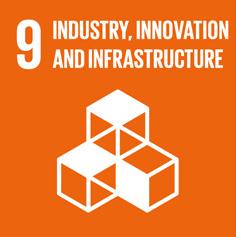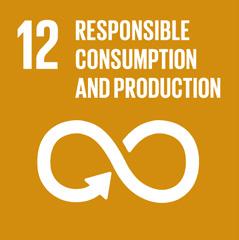
2 minute read
Technology for a sustainable society
At Danish Technological Institute, we believe that technology is a critical factor in creating sustainable solutions - both when it comes to climate issues, society and economic growth.
Since 2019, Danish Technological Institute has been assessing how all of the Institute’s R&D activities (totalling over 2,100) contribute to fulfilling the UN’s Sustainable Development Goals. In 2021, the Institute has mainly contributed to the following of the UN’s Sustainable Development Goals via R&D activities:
• 9 - Industry, Innovation and
Infrastructure • 12 - Responsible Consumption and Production • 13 - Climate Action • 2 - Zero Hunger
Water purification technology
With a new water purification technology based on flotation, the animal feed and food industry can save large volumens of water and energy. This was demonstrated by the lighthouse project Innoflot at Triple Nine in Thyborøn.
TripleNine expects to be able to save 12,000 m3 of water each year - around 70 per cent - and 17,000 GJ in energy savings. Together, this adds up to about a million Danish kroner in savings per year.
The lighthouse project Innoflot is supported by MUDP under the Danish Environmental Protection Agency and it is a collaboration between TripleNine, Danish Technological Institute, BioAqua and Lemvig Vand A/S.
Clean air - for everyone
Even though we all breathe the same air, air pollution still hits the poorest the hardest - international studies have identified a correlation become inequality and air pollution. We want to try to change this via the DivAirCity EU project.
The Institute’s role is to ensure that the initiatives have a documented effect on air quality in urban environments.
The four-year project is supported by the EU’s Horizon 2020 programme and the project participants are Danish Technological Institute, DCE - Danish Centre for Environment and Energy and Aarhus Municipality.
A ‘joystick robot’ is to improve the working environment at construction sites
The construction industry’s employees typically lift a lot of heavy objects in repetitive movements.
In the CoCoBot project, we examined the opportunities for automation in the construction industry using mobile robots, which will improve the working environment at construction sites.

The project was completed together with, among others, STB BYG A/S, Danish Technological University and Capra Robotics ApS under the auspices of RoboCluster. The project was supported by the Danish Ministry of Higher Education and Science and the Region of Southern Denmark.
Circular economics in the construction industry
The Institute houses and operates Videncenter for Cirkulær Økonomi i Byggeriet (VCØB - in English translated as ‘The Knowledge Centre for Circular Economics in the Construction Industry’). With its technical expertise, VCØB is to guide, support and involve the players in the construction sector’s value chain. The aim is to identify solutions for problems and to remove barriers that hinder circular economics in the construction industry.









